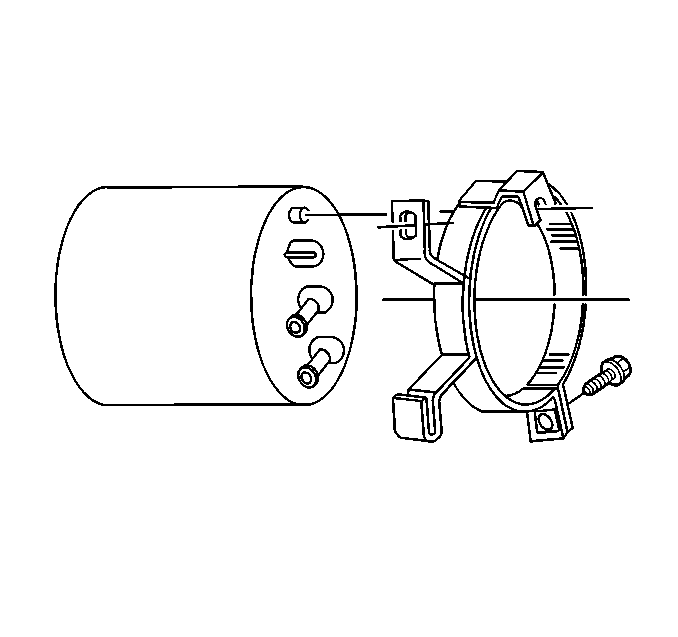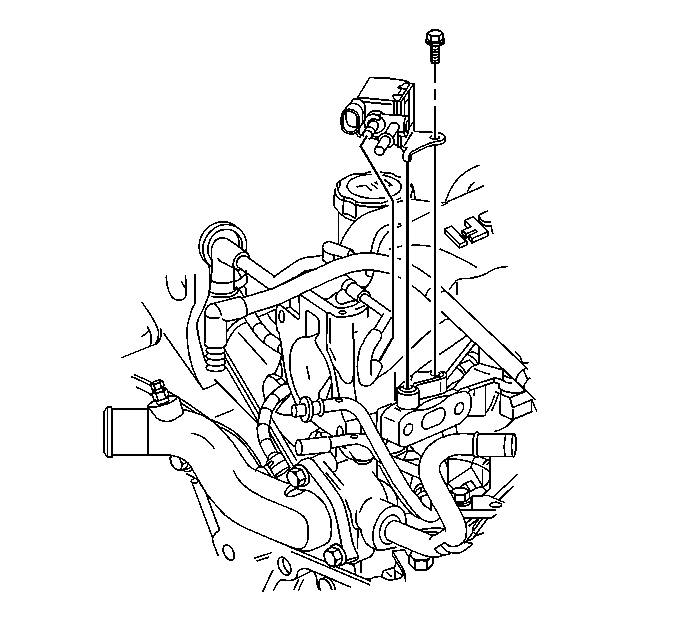EVAP System Components
The EVAP system consists of the following components
| • | EVAP Canister Purge Valve |
EVAP canister

The EVAP canister is filled with carbon pellets
that are used to absorb and store fuel vapors. Fuel vapor is stored in the
canister until the PCM determines that the vapor can be consumed in the normal
combustion process.

The EVAP canister has 2 ports.
- Vapor pipe
- Purge pipe
EVAP purge valve

The EVAP purge valve controls the flow of vapors
from the EVAP system to the intake manifold. This normally closed valve is
pulse width modulated by the PCM to precisely control the flow of fuel vapor
from the EVAP canister to the engine.
Fuel Sender Assembly
The fuel sender assembly is used by the EVAP system to collect fuel
vapors at the top of the tank, and provides for the connection of the EVAP
vapor pipe.
EVAP Vapor Pipe
The EVAP vapor pipe provides a path for fuel vapors to move from the
fuel sender to the EVAP canister.
EVAP Purge Pipe
The EVAP purge pipe provides a path for the fuel vapors to move from
the EVAP canister to the EVAP purge valve.
EVAP system operation
The evaporative emission (EVAP) system limits fuel vapors from escaping
into the atmosphere. Fuel tank vapors are allowed to move from the fuel tank
(due to pressure in the tank), to the fuel sender assembly, through the vapor
pipe, into the EVAP canister. Carbon in the canister absorbs and stores the
fuel vapors. Excess pressure is vented from the EVAP canister to atmosphere.
The EVAP canister stores the fuel vapors until the engine is able to use
them. At an appropriate time, the PCM will command the EVAP purge valve open,
allowing engine vacuum to be applied to the EVAP canister. Fresh air is drawn
through the canister, pulling fuel vapors from the carbon. The air/fuel vapor
mixture continues through the EVAP purge pipe and EVAP purge valve into the
intake manifold to be consumed during normal combustion.
Results of Incorrect EVAP System Operation
| • | The vehicle may stall, run rough or surge if the EVAP purge valve
is stuck open. |
| • | A fuel odor concern may be caused by fuel vapor escaping from: |
| - | a damaged or defective EVAP canister |
| - | a loose, damaged or disconnected vapor pipe |
| - | a loose, damaged or disconnected purge pipe |



